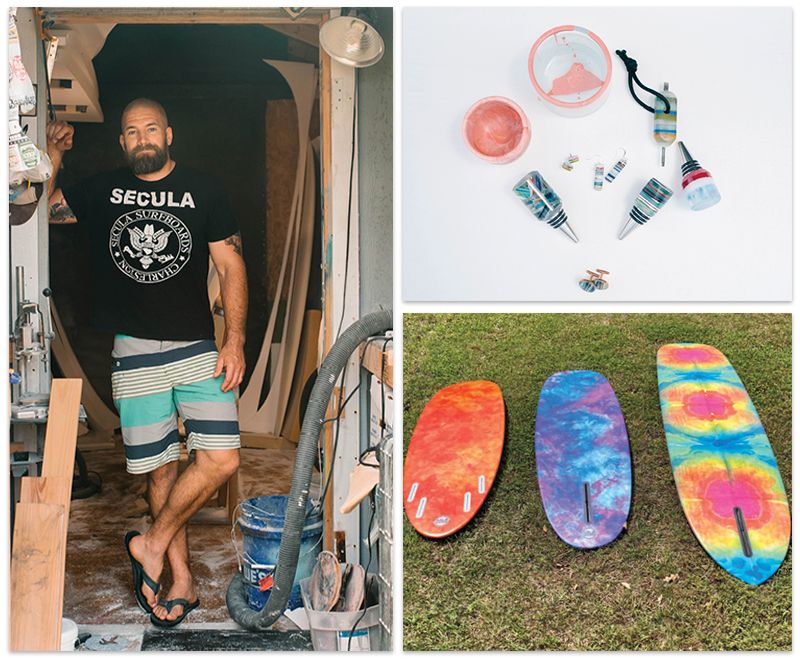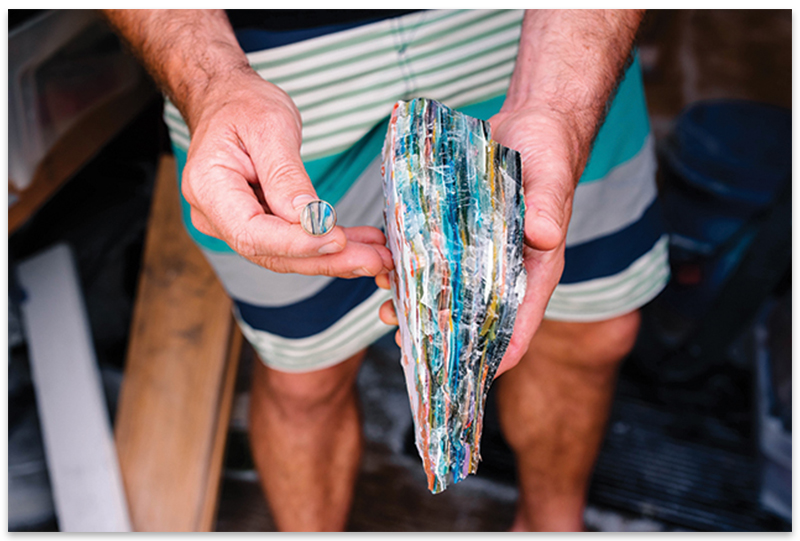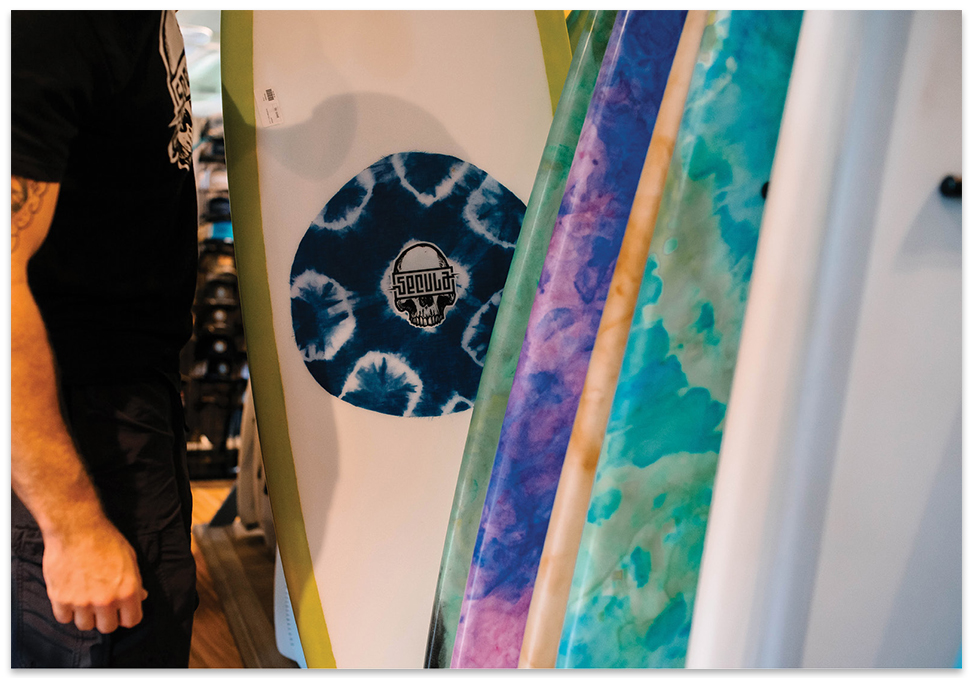Plus, find out what he does to keep extra resin out of landfills

(Clockwise form above left) Tim Jump, founder of Secula Surf at his James Island workshop; He crafts cuff links, bottle stoppers, and other accessories from the excess resin; custom surfboards.
These days, there’s a YouTube video for nearly every DIY project you can dream up, but when East Coast surfer Tim Jump began toying with the idea of making his own surfboards on the New Jersey shore in the early aughts, the video-sharing platform had yet to hit the Internet. “I think there was one video series on VHS about making surfboards,” Jump says. “But really, you had to hang out with the old guys in the industry.”
Jump, an art student at the time, got informal mentoring from the team at Brian Wynn Surfboards in Egg Harbor Township, New Jersey, where he spent as much time as he could between jobs. “I built my first surfboard in 2004,” he says, but as life took him farther from the ocean, building his own boards became less of a priority. “I got a job teaching art and special ed for nine years, bouncing around as my wife finished up med school.”
Eventually, a job at MUSC landed the young family in Charleston, where Jump renewed his passion for surfing. He transformed a backyard shed into a workshop, building high-quality, handmade surfboards—longboards, mid-lengths, Fish, Grovelers, and mini-Simmons. “Basically, I build anything but high-performance short boards,” he explains.

In true surf ethos, Folly Beach board shaper Tim Jump of Secula Surf uses excess resin to make colorful cuff links, earrings, bottle stoppers, and other accessories. It’s all in an effort to keep waste out of the landfill and to infuse his work with soul.
Like a swell gaining speed as it approaches the shore, success for Secula Surf came gradually, built on relationships with local surfers and retailers. “It was a slow burn,” Jump says. “But I eventually got enough boards under the right feet. Not only were the guys surfing my boards really good surfers, but they were also really great guys. They started talking to people out in the lineup and sending them my way.” When the pandemic hit, Jump was one of the lucky few who saw a boost in business as folks searched for ways to safely spend time outdoors.
Today, Jump’s stock boards are available at Carolina Surf Brand as well as the Folly Beach landmark, Ocean Surf Shop, which backed his work early on, lending it credibility. Custom boards can be ordered through Etsy or Instagram. Jump’s even happy to meet prospective clients at the beach and share a session in the water to help them understand what they want out of a board before making a big investment.
Back in his workshop, he shapes, laminates, colors, sands, and finishes each board by hand, using foam and fiberglass he sources in Anderson. The epoxy resin is made in Florida, and he gets his fin boxes in California. To cut back on waste, he repurposes excess resin—which drips into buckets and on the floor—into earrings, planters, and bottle stoppers. In addition, Jump gives back to the community, offering discounted custom boards for any veteran who completes the Warrior Surf Foundation program.

Jump builds longboards, mid-lengths, and other custom surfboards, some of which can be found at Ocean Surf Shop.
By the Numbers